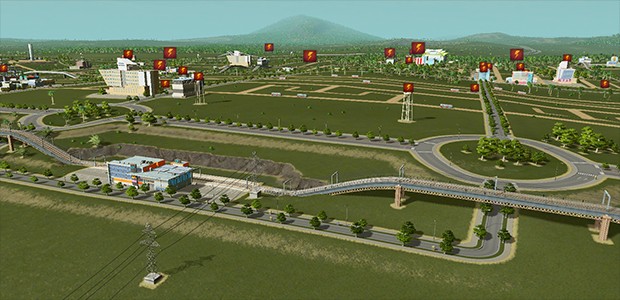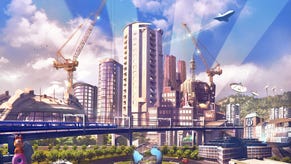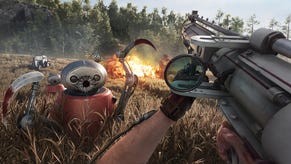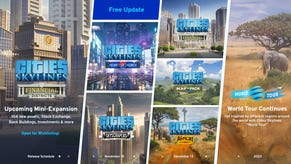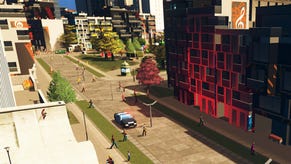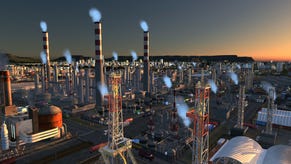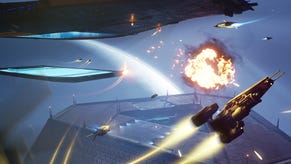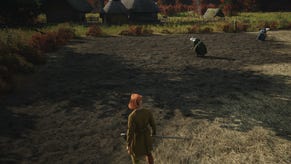Building A Self-Sufficient City In Cities: Skylines - Part One
Arcologyology
Cities: Skylines [official site] is our RPS Game Of The Month for April. As part of our month of coverage, we asked Duncan Geere to build an arcology in the game. This is his attempt.
Arcologies are pretty awesome, as town planning concepts go. The towering, fishbowl-topped edifices that seasoned gamers will recognise from SimCity 2000 were one of that game's most beloved features, but they bear only a passing resemblance to the real thing. In reality (and I use that word loosely because no-one's ever successfully finished one) an arcology is merely a sustainable, self-contained settlement that can supply most of the needs of a large population that dwells within.
Cities: Skylines doesn't include the arcologies of SimCity 2000, and at the time of writing there's only one in the Steam workshop. So I thought it might be a fun experiment to try and build one myself - one a little closer to the true meaning of the term. I wanted to build a city that relies as little as possible on the outside world, with minimal impact on natural resources. As many planners in the real world have discovered, that is far harder than it appears.
The history of arcologies goes back almost a century. Frank Lloyd Wright and Buckminster Fuller proposed early self-sustaining cities, but the term "arcology" itself was coined in 1969 by Italian architect Paolo Soleri, who dedicated his life to trying to establish a sustainable community called Arcosanti in the Arizona desert. Some argue that Antarctic bases like Halley and McMurdo are arcologies, but they only sustain a population of tens and hundreds respectively, albeit in very harsh conditions.
The closest thing we have to an arcology in reality, right now, is Masdar City - a zero-waste city project in the desert of the United Arab Emirates, about twenty kilometres south-east of Abu Dhabi. Work started in 2006, with British architects Foster + Partners drawing up plans for a city housing about 50,000 people in just six square kilometres. It was due to be finished within about eight years, but the global financial crisis intervened and to date it consists of just a handful of office buildings. Final completion is now scheduled for between 2020 and 2025. Surely I could do better than that.
The first step is funding. The Masdar project is expected to cost about $20 billion, so I figure the best approach to approximate the riches of the Gulf states would be to just tick the 'unlimited money' box on map creation. I pick the 'Diamond Coast' map, because that sounded rather like the sun-kissed shore of the Persian Gulf that the real Masdar City sits on.
I rely on Foster + Partner's futuristic renderings to lay out my road network. Masdar City is built around pedestrians, cyclists and public transport but Cities:Skylines dictates that buildings have to be on a road so I choose as low-capacity roads as possible while still maintaining something of a hierarchy. Inside the twin squares that serve as the city's basic shape, only gravel tracks serve the neighborhoods, while a series of roundabouts offer connections to the outside world. I zone the squares as districts, banning all heavy goods traffic within.
Power is a simpler decision - Masdar City is powered by a 22-hectare field of solar panels. The plans originally called for solar panels covering most of the roofs of the buildings, but the planners found that they quickly got covered with sand blown by the wind, and sweeping all the panels in one place was far easier than accessing everyone's roofs. I build a couple of solar power plants and trash incinerators to power my city, making it 100 percent renewable.
Water isn't quite so easy in a desert. In the real-world plans, 80 percent of the water in the city is reused - mostly to irrigate crops that grow outside the city walls. I throw up some water towers around the city outskirts, pumping it up from aquifers below ground (which is questionable in sustainability terms - a desalination plant would be better), as well as building three wastewater treatment plants on the seashore. I enact power, water and recycling ordinances to make sure everyone does their bit. I also dot the normal utilities around - education, health, police and fire services.
The next step is public transport, and here I'm going all out. A railway snakes through the city on Foster + Partners' plans, so I do my best to approximate that - despite the noise pollution it's going to cause local residents. I also build a subway system and several comprehensive bus routes. The initial plans for the real Masdar City banned cars entirely, relying instead on a personal rapid transit system where a series of pods would whisk you where you want to go. That idea was eventually shelved due to ballooning costs, in favour of a focus on electric cars and other clean-energy vehicles. I plonk an airport down on the city's outskirts, as the real-world Abu Dhabi airport is just a stone's throw from Masdar City, and make all public transport free.
That just leaves one final feature of the utopic renders created by the architects that I want to include - a trio of green, leafy strips that run through the city. These break up the grid I've created, and I'm careful not to zone them so buildings aren't constructed on top. I dot a few parks and plazas amongst them, to raise land values further and give my citizens somewhere cool, hopefully in both senses of the word, to hang out. Despite being situated in one of the world's hottest countries, the real streets of Masdar City average between 15 and 20C, thanks to a 45 metre wind tower modelled on a traditional Arab design that sucks cool air from aloft and brings it down to ground level.
Buildings are also clustered close together for shade in the plans, so I'm careful to zone everything high-density. I go for offices and high-density commercial in the centre, surrounded by high-density residential, with a large agriculture-specialised industrial district outside of the city walls. I throw some high-density commercial in near my stations too, so people can buy a bag of crisps and a magazine before their train ride.
The city is ready. All the services are in place, and it's time for people to move in. I've spent a lot of money, so how long will it take until the city is profitable? More importantly, will the population actually like living in the utopia that I've created for them? Nervously, I unpause the game and... Well, you'll have to wait until part two to find out what happens.
Part two can be found via this page.






